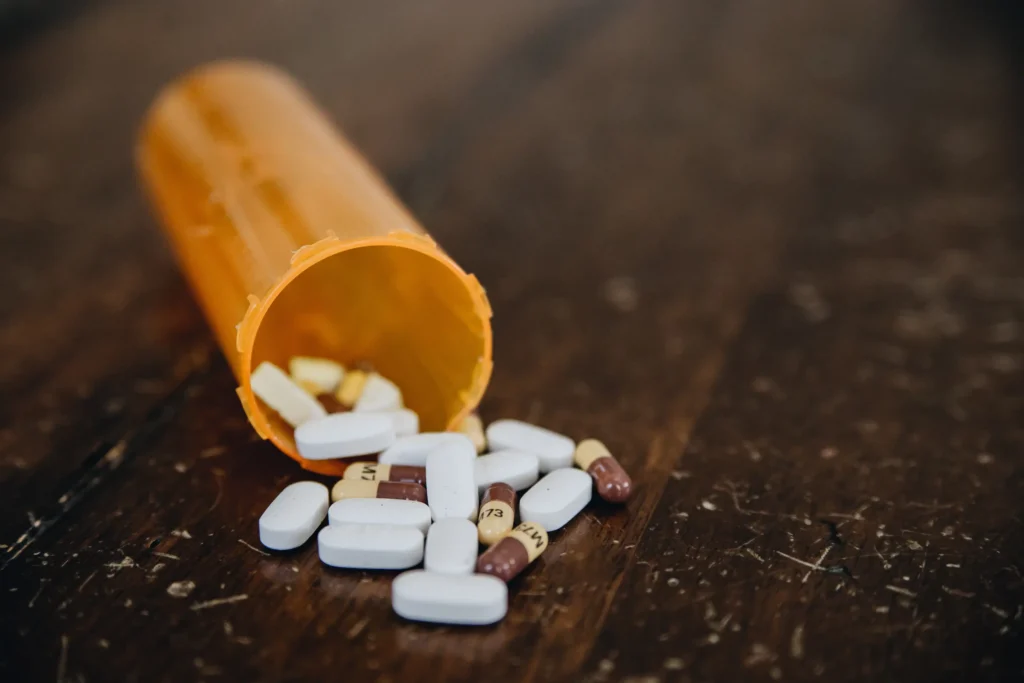Key Takeaways
- Mixing MDMA with other substances greatly increases the risk of overdose, heart failure, and brain damage.
- Polysubstance use with MDMA leads to unpredictable body reactions and dangerous drug interactions.
- Comprehensive addiction treatment with medical detox and residential care helps restore health and long-term stability.
MDMA, often called ecstasy or molly, is seen by many as a party enhancer or a way to feel emotionally connected. It’s known for creating feelings of warmth, energy, and euphoria. The problem arises when MDMA is mixed with other drugs or alcohol. People may combine substances to intensify the high, balance side effects, or feel more relaxed afterward. What starts as curiosity or recreation can lead to severe physical and psychological consequences.
At San Diego Wellness Center, we’ve seen the reality behind this kind of use. Mixing MDMA with other substances is not only unsafe but can also trigger rapid health crises that may become life-threatening. This article explores what MDMA does to the body, why mixing substances is so dangerous, how those combinations affect health, and what addiction treatment can do to help people recover safely.
What Is MDMA?
MDMA stands for 3,4-methylenedioxymethamphetamine. It’s a synthetic chemical that stimulates the central nervous system and alters mood and perception. It works by releasing large amounts of serotonin, dopamine, and norepinephrine in the brain. These neurotransmitters affect mood, energy, and emotional connection. That’s why MDMA can make people feel euphoric, loving, and confident.
Effects of MDMA
The effects of MDMA usually appear within 30 to 45 minutes after taking it and can last several hours. Common short-term effects include:
- Heightened mood and energy
- Emotional openness or empathy
- Increased heart rate and blood pressure
- Sweating, jaw clenching, and teeth grinding
- Muscle tension
- Dilated pupils and sensitivity to light
- Dehydration or overheating
Once the effects fade, users often experience a crash marked by fatigue, depression, irritability, and loss of appetite. Repeated use can interfere with serotonin levels, which can disrupt mood regulation long-term.
MDMA Risks
Even taken alone, MDMA carries real risks. It can cause severe dehydration, heatstroke, liver or kidney damage, and lasting cognitive changes. Long-term use can affect memory, concentration, and emotional stability. What makes MDMA particularly risky is its unpredictable composition. Pills or powders sold as MDMA are often cut with other substances, such as methamphetamine, caffeine, or synthetic cathinones, increasing the danger before any deliberate mixing occurs.
Why It’s So Dangerous to Mix Substances
People mix MDMA with other substances for different reasons — to extend the high, dull anxiety, or reduce the “come-down” period. Regardless of intention, combining drugs significantly raises the chance of overdose, medical emergencies, and long-term neurological harm.
Unpredictable Reactions
When multiple substances enter the body, each one interacts with the others in unpredictable ways. MDMA already speeds up the heart and increases serotonin levels. Adding another stimulant, depressant, or hallucinogen changes how those systems work. This can overwhelm the heart, lungs, or brain.
Even small doses of certain combinations can become lethal because the body cannot metabolize all the drugs efficiently. For example, alcohol and MDMA compete for the same liver enzymes. That slows the breakdown process, leaving higher levels of both in the bloodstream and amplifying toxicity.
Serotonin Syndrome
MDMA’s effect on serotonin is one of its main attractions — and one of its biggest dangers. When someone mixes MDMA with antidepressants, particularly SSRIs or MAOIs, serotonin levels can skyrocket beyond safe limits. This can lead to a condition called serotonin syndrome, a medical emergency that causes confusion, agitation, rapid heart rate, muscle rigidity, fever, and seizures.
Hidden Drug Adulteration
Even before intentional mixing, MDMA is often already combined with other substances during production or sale. A pill might contain traces of methamphetamine, ketamine, or fentanyl without the user’s knowledge. Adding more drugs or alcohol on top of that raises risks exponentially.
Common MDMA Combinations and Their Effects
Some combinations appear more frequently than others, and each one brings its own unique hazards. Sometimes MDMA is compared to other stimulants, like methamphetamine, but the effects differ. (See our in-depth article “MDMA vs Meth – Are They The Same?” for a full comparison.) When someone mixes MDMA with stimulants such as meth, cocaine or amphetamines, the strain on the cardiovascular and neural systems escalates exponentially.
| MDMA Combination | Common Reason for Mixing | Main Risks | Possible Consequences |
| MDMA + Alcohol | To relax or ease anxiety | Dehydration, overheating, heart strain | Heatstroke, liver stress, blackouts |
| MDMA + Cocaine or Methamphetamine | To intensify euphoria or energy | Heart overload, arrhythmia, high blood pressure | Heart attack, stroke, collapse |
| MDMA + Benzodiazepines or Opioids | To calm the crash or reduce tension | Respiratory depression, slowed reaction | Coma, overdose, respiratory arrest |
| MDMA + Antidepressants (SSRIs/MAOIs) | To manage mood or emotional flatness | Serotonin overload | Confusion, seizures, death |
| MDMA + Ketamine or Hallucinogens | To increase dissociation or visuals | Unpredictable brain activity, panic, psychosis | Psychotic breaks, respiratory distress |
Each of these combinations interferes with the body’s balance in a different way. Mixing a stimulant like MDMA with a depressant such as alcohol or opioids forces the body to process conflicting signals. One system speeds up while another slows down, leaving vital organs confused and under extreme stress.
The Effects of MDMA Polysubstance Use on the Body and Mind
Mixing MDMA with other substances isn’t just risky in the moment, it also accelerates long-term damage.
Cardiovascular System
Both MDMA and other stimulants elevate heart rate and blood pressure. Over time, this can lead to structural changes in the heart muscle, irregular heartbeat, or heart failure. Even a single episode of overheating or cardiac stress can cause lasting damage.
Liver and Kidneys
The liver is responsible for metabolizing MDMA and alcohol. When these are combined, the liver works harder and can become overwhelmed. This increases the likelihood of liver inflammation, scarring, or failure. Similarly, dehydration caused by MDMA and alcohol or stimulants can strain the kidneys, leading to long-term impairment.
Brain and Neurotransmitters
MDMA’s effects on serotonin and dopamine are well known. Adding other drugs disrupts that balance even more severely. Chronic mixing can reduce natural serotonin production, making depression and anxiety more likely. Some users report emotional numbness, memory gaps, and difficulty regulating mood long after use has stopped.
Mental Health Impact
People who mix MDMA often experience intense emotional ups and downs. The crash after combined use is usually much harsher, sometimes leading to severe depression or paranoia. Repeated cycles of highs and crashes can trigger panic attacks, psychotic episodes, or suicidal thinking.
Why Polysubstance Use Often Leads to Addiction
When someone uses multiple drugs together, they are more likely to develop addiction because each substance interacts with the brain’s reward pathways differently. MDMA floods the brain with serotonin and dopamine, reinforcing the pleasurable effects. Alcohol or opioids may then dull anxiety, creating a pattern of using one to enhance and another to balance out.
Over time, the brain begins to rely on this chemical pattern to feel normal. Tolerance builds, and cravings intensify. The more substances used, the more difficult it becomes to stop without professional support.
At San Diego Wellness Center, many individuals entering treatment didn’t realize how intertwined their use had become. What began as “just at parties” or “just to relax after” evolved into daily dependence and health issues that needed medical attention.
Recognizing a Crisis: Warning Signs of MDMA and Drug Interaction
Knowing the warning signs of an MDMA-related emergency can save lives. If someone has taken MDMA along with other substances, call emergency services immediately if you see any of these symptoms:
- Profuse sweating or inability to cool down
- Very high body temperature
- Rapid or irregular heartbeat
- Shortness of breath or slow breathing
- Confusion, panic, or hallucinations
- Tremors, seizures, or muscle stiffness
- Sudden collapse or unresponsiveness
- Vomiting, dizziness, or chest pain
Quick medical attention can make the difference between recovery and fatal complications.
Addiction Treatment for MDMA and Polysubstance Use
Effective addiction treatment addresses both the physical and psychological aspects of recovery. At San Diego Wellness Center, our approach to MDMA and polysubstance cases focuses on medical safety, emotional healing, and long-term stability.
Medical Detox
The first step in treatment is medical detox. This process helps remove toxins from the body while managing withdrawal symptoms in a controlled, safe environment. When multiple substances are involved, detox requires professional supervision to handle overlapping withdrawal effects.
During detox, clients are monitored around the clock. Medical staff can administer medications to ease discomfort, stabilize heart rate and blood pressure, and prevent dangerous complications. Detox prepares the body for the next phase of treatment by restoring balance and clarity.
Residential Treatment
After detox, residential treatment provides a structured, supportive environment. Clients live on-site and participate in daily therapy sessions, skill-building activities, and individualized care plans. Treatment may include cognitive behavioral therapy, trauma-focused therapy, and holistic modalities that support emotional regulation and stress management.
Living in a therapeutic setting allows individuals to break free from triggers and habits that feed addiction. It also helps rebuild healthy routines and relationships that sustain long-term recovery.
Dual Diagnosis and Mental Health
Polysubstance use often coexists with mental health conditions such as depression, anxiety, or trauma-related disorders. Treating both at once is critical. Integrated care addresses not just substance use but also the psychological roots that keep it active.
Aftercare and Relapse Prevention
Recovery does not end after residential treatment. Ongoing support is vital. Aftercare programs provide continued therapy, relapse prevention planning, and community connections that help maintain sobriety. Group therapy, outpatient programs, and alumni support can reinforce progress and help individuals stay on track.
Contact San Diego Wellness Center Today
Mixing MDMA with other substances is far more dangerous than most people realize. It pushes the body beyond its limits, strains the heart and liver, and disrupts brain chemistry in ways that can last long after the high fades. Polysubstance use can turn recreational drug use into dependency faster than expected and create medical emergencies that are entirely preventable.
If you or someone you care about has been mixing MDMA with alcohol, stimulants, or prescription medications, professional treatment can make all the difference. San Diego Wellness Center offers specialized care for individuals struggling with MDMA use and polysubstance addiction. If you’re ready to take the first step toward recovery, contact our team today. Our compassionate professionals are here to guide you safely toward a healthier, balanced life.
FAQs
1. What makes mixing MDMA with other substances so dangerous?
Mixing MDMA with other drugs changes how each substance affects the body. These interactions can raise heart rate, cause serotonin overload, and increase the risk of overdose or organ failure.
2. Can MDMA cause addiction on its own?
Yes. MDMA affects the brain’s reward system, and repeated use can lead to tolerance, cravings, and psychological dependence. The risk grows higher when mixed with other substances.
3. What should I do if someone has taken MDMA and collapses?
Call emergency services immediately. Move the person to a cool place, loosen clothing, and try to keep them conscious while waiting for help.
4. How does medical detox help people who mix MDMA with other substances?
Medical detox allows professionals to safely manage withdrawal symptoms from multiple drugs at once. This helps stabilize vital signs and prevent medical complications.
5. How long does treatment for MDMA and polysubstance use take?
Treatment length varies depending on each person’s needs, substance history, and overall health. Many people begin with medical detox followed by several weeks or months of residential care and aftercare.


